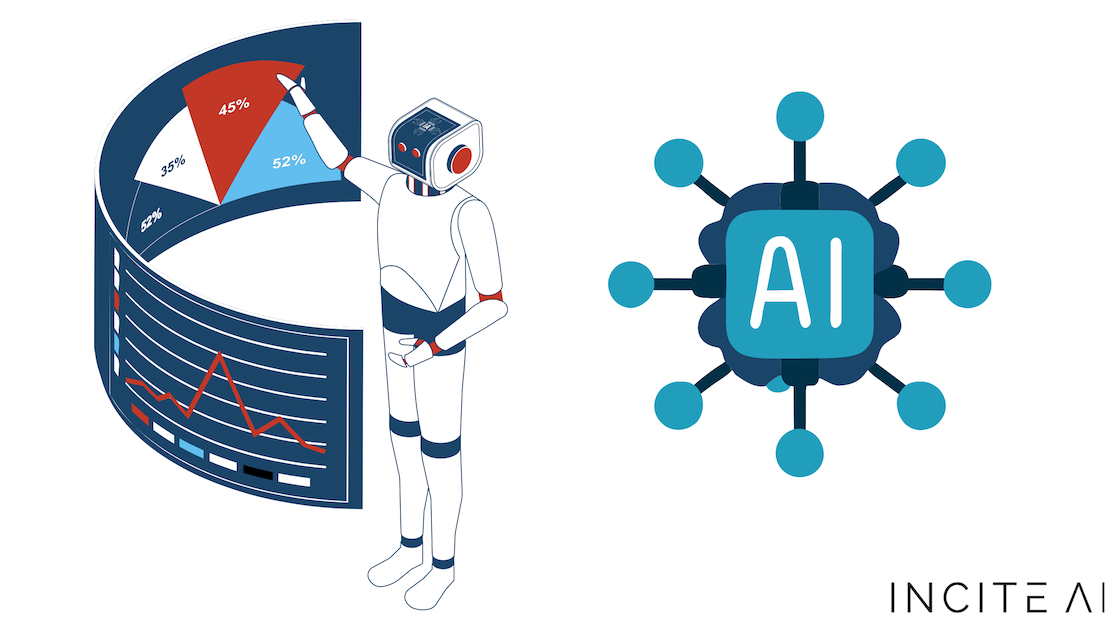Customer support can be an important factor when choosing a platform for AI analysis and prediction of stocks. Reliable, responsive support can have a huge impact in resolving any issues, increasing the use of the platform, and ensuring that trading goes seamless. Here are 10 top suggestions for evaluating the customer support of these platforms.
1. Assess the availability of support
24/7 support: Make sure that your platform provides support round-the clock, which is important for real-time trading and global markets.
Business hours. If 24 hour support isn't available, make sure to check that you are able to get support during your trading time.
Make sure that support is available on weekends and holidays.
2. Test Response Times
Initial response. Send a test query to support to see how fast they'll be able to respond.
Resolution time: Measure the length of time required to fix a issue.
Live chat: Examine the effectiveness and responsiveness of the live chat system.
3. Review Support Channels
Multiple channels: Make sure that the platform is compatible with multiple channels, like live chat, phone, email, social media, etc.
You can check your preferred channel to determine if it's reliable and available.
Self-service Options: To solve issues quickly, you can use an extensive Knowledge Base as well as FAQs and Community Forums.
4. Assess the Quality of Support
Support agents should be knowledgeable regarding trading platforms, technical concerns, and platform.
Problem-solving: Determine whether agents are able to effectively solve difficult issues or escalate them if appropriate.
Professionalism - Check to see the support interactions are pleasant, helpful, and professional.
5. Check for Account Managers
Premium support: Find out if you have dedicated account managers for higher-tiered users or institutions.
Account managers should offer individualized support and advice that is proactive.
Relationship building: Ensure that the account managers are on hand and build long-term relationships.
Review the Support Documentation
Knowledge base: Make sure that the platform offers an easily searchable, well-organized and comprehensive knowledge base, including tutorials and guides.
Video tutorials Check if you can find video tutorials on this platform.
API documentation: If you're a developer, check if the platform offers clear and detailed API documentation.
7. Assess Community and Peer Support
Forums for users: Find out if there's an active community of users or a forum on the platform, where users can share ideas and suggestions.
Look for social media groups that aren't official (e.g. Reddit or Facebook). These groups allow users to discuss the platform.
Community engagement - Look to determine if there's active participation by the staff of the platform in community forums or online discussions.
8. Evaluate Escalation Processes
Issue escalate. You must have a defined process to report unresolved issues management or higher-level staff.
Follow-up: Check if Support follows up to confirm that the issue is resolved.
Feedback loop: See whether feedback is collected from users to improve the support services.
9. Test Support during Critical Conditions
Market volatility: Assess the responsiveness of staff members during periods of high market volatility.
Technical problems: Simulate a technical issue (e.g. login issues, data discrepancy) to test how support responds.
Trade execution: Determine whether the support staff can help with urgent issues in trade (e.g. delayed execution, orders that fail).
10. Review Feedback from Users on Support
Online reviews: Read user reviews on platforms like copyright, G2, and Reddit in order to assess overall satisfaction.
Testimonials or Case Studies: Search for reports or testimonials that show the positive experiences of customers.
Learn how the platform handles negative feedback and complaints.
Bonus Tips
Check out the platform with a demo or trial period.
Support for your language If English isn't your primary language, you should check to see if it's available.
Training and onboarding Learn whether there are any onboarding sessions that could aid new users to get up and running.
Use these guidelines to evaluate the support offered by AI stock trading platforms. Choose a platform offering prompt, efficient and quick assistance. Support from a knowledgeable customer can greatly improve the overall user experience as well as enable you to make the most of the features of the platform. Have a look at the top rated inciteai.com AI stock app for more recommendations including incite, stock ai, AI stock picker, ai for investing, ai investing app, ai for investing, ai for investing, ai trading tools, using ai to trade stocks, chatgpt copyright and more.

Top 10 Suggestions To Judge The Speed And Latency Of Ai Platforms For Trading Stocks
Speed and latency is crucial when it comes to considering AI stock prediction/analyzing trading platforms. This is especially important for algorithmic traders, high-frequency traders, and active traders. Millisecond delay can have an effect on the profit of a trade. Here are the top 10 strategies for evaluating latency and speed on these platforms:
1. Data feeds in real-time to be evaluated
Time to deliver data: The platform must provide real-time, accurate data within the shortest amount of time (e.g. with sub-millisecond delays).
Closeness of data source: Determine if servers are located in proximity to major exchanges.
Data compression: Find out whether your platform uses effective data compression techniques in order to accelerate the delivery of data.
2. Time to test trade execution
The time it takes to process your order is the speed at which your order is processed and executed through the platform.
Direct Market Access (DMA) Check to see if the platform you are using supports DMA. This allows orders to go directly to the exchange, without the necessity for intermediaries.
Execution Reports: Verify if your platform provides specific reports on the execution of orders, as well as timestamps.
3. Examine the Receptivity of Platforms
Speed of the user interface (UI) Test how quickly the platform's user interface responds your inputs.
Chart updates - Make sure that the charts are updated immediately and without any lag.
The performance of mobile apps: If you use mobile apps on your phone, ensure that it runs as fast as its desktop version.
4. Verify that the infrastructure is low-latency.
Server locations The platform must use high-speed, low-latency servers which are close to major financial hubs or exchanges.
Co-location services: Find out whether the exchange offers co-location services, allowing the hosting of your trading algorithms on servers that are close to the exchange.
High-speed networks: Determine that the platform utilizes high-speed fiber-optic networks or other low-latency technology.
5. Evaluate Backtesting and Simulation Speed
Find out how fast your platform can process and analyze past data.
Simulating latency Make sure that the platform is able to simulate trades without noticeable delay.
Parallel processing: Ensure that the platform is using parallel processing or distributed computing, which speeds up complex computations.
6. Assessment of API Latency
API response time Measuring how quickly the platform's API responds (e.g. getting market data, or placing orders).
Rate limits: Make sure that the API has adequate limits on rates so that there are no delays during high-frequency trading is taking place.
WebSocket Support: Check whether your platform is compatible with WebSocket protocols that stream data in real-time with low latency.
7. Test Platform Stability and Stability under load
High-volume trades to test the platform's flexibility and stability, try simulated high-volume scenarios.
Market volatility: Ensure that your platform is able to handle price fluctuations in times that are high-risk.
Stress testing Test your strategy: Find out whether the platform allows you to test your plan under extreme circumstances.
8. Investigate connectivity and network
Internet speed requirements: To ensure optimal performance, make sure that your internet speed is in line with the speed of your preferred platform.
Make sure there aren't any redundant connections.
VPN latency. Check if you're using a VPN in the event that this causes latency.
9. Check for Speed-Optimization Features
Pre-trade Analyses: Check that the platform has pre-trade analyis to optimize execution speed and order processing.
Smart order routing (SOR) often referred to as smart order routing is a method of determining the fastest and the most efficient execution locations.
Monitoring latency: Check that the platform offers tools to analyze and monitor the latency in real time.
10. Review Feedback from Users and Benchmarks
User reviews: Conduct studies to determine the platform's speed and latency.
Third-party benchmarks. You can find benchmarks from independent sources, or reviews that compare the speed of a platform with other platforms.
Case studies: Contact the platform to see if it has case studies or testimonials that demonstrate its low latency capabilities.
Bonus Tips
Utilize the trial period or free demo period to test your platform's speed and latency in real-world conditions.
Customer support: Make sure that the platform provides assistance with issues related to latency, or for optimization.
Hardware requirements: Determine if the platform needs specific hardware for maximum performance.
The following tips can help you assess the speed of AI trading platforms that predict/analyze stock prices. It will allow you to pick a trading platform which best suits the requirements of your trading and eliminates the chance of delays. Trading platforms with low latency are crucial for traders who use high-frequency algorithms. small delays could negatively impact their profits. Follow the most popular best ai for stock trading url for more examples including free AI stock picker, stocks ai, ai investment tools, can ai predict stock market, AI stock investing, AI stock prediction, chart analysis ai, AI stock predictions, AI stock price prediction, best AI stocks to buy now and more.
